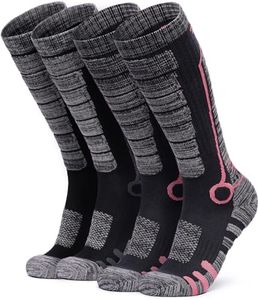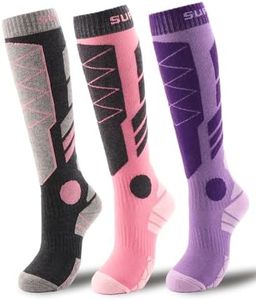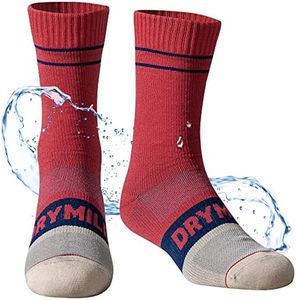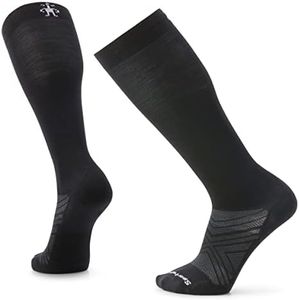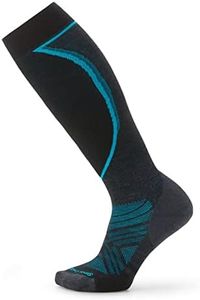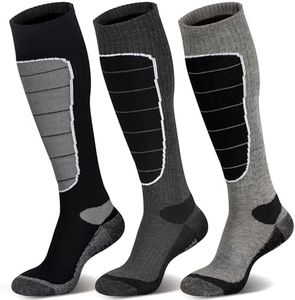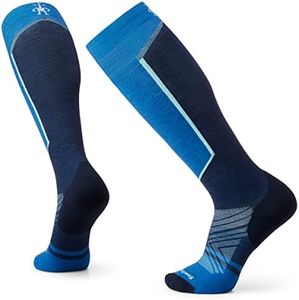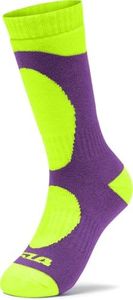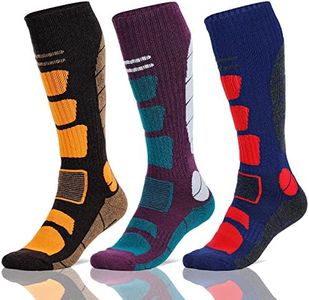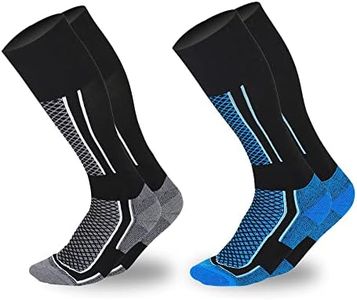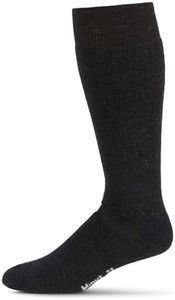We Use CookiesWe use cookies to enhance the security, performance,
functionality and for analytical and promotional activities. By continuing to browse this site you
are agreeing to our privacy policy
10 Best Ski Socks
From leading brands and best sellers available on the web.By clicking on a link to a third party's website, log data is shared with that third party.
Buying Guide for the Best Ski Socks
Choosing the right ski socks is an essential step for comfort, warmth, and performance on the slopes. Unlike regular socks, ski socks are specifically designed to provide insulation, moisture management, padding, and a secure fit within ski boots. It’s important to consider your personal comfort, the weather conditions, and how prone you are to cold feet, as these will influence your best choice.MaterialThe material of ski socks determines how well they keep your feet warm, dry, and comfortable. Common materials include merino wool, synthetic fibers like polyester or nylon, and blends of these. Merino wool is known for its great warmth, natural odor resistance, and moisture-wicking properties, making it ideal for cold weather and long days. Synthetic fibers are also effective at moving sweat away from skin and tend to dry quickly, but might not offer the same level of warmth as wool. If you get cold easily or ski in low temperatures, lean toward merino-rich socks; for those who overheat or ski in milder conditions, synthetics or blends can keep your feet dry without overheating.
Thickness/CushioningSki socks come in various thickness levels, from ultra-lightweight to heavily cushioned. Thin socks offer more sensitivity and a closer fit, which helps with boot control and is often preferred by experienced skiers or those using custom-fit boots. Medium cushioning gives a balance between warmth and support, suitable for most casual skiers. Heavily cushioned socks are bulkier and provide more warmth and padding, useful for cold days or if your boots run slightly big. It’s best to match sock thickness to the fit of your ski boots and your personal preference for warmth and comfort on the slopes.
Fit and LengthA good ski sock should fit snugly without bunching or slipping, as wrinkles can cause discomfort or blisters. Look for socks that hug your foot, heel, and calf to stay securely in place. Most ski socks are knee-high to protect skin wherever it touches the inside of the ski boot. Make sure the socks are tall enough for your boots, so there’s no exposed skin or rubbing at the top. Choose a fit that’s gentle yet supportive, matching your calf size and boot height.
Moisture ManagementKeeping your feet dry is crucial for both comfort and warmth, so ski socks are designed to wick moisture away from skin. This prevents blisters and helps maintain insulation. Some materials and weaves are better at wicking than others; merino wool and many technical synthetics excel here. If you tend to sweat a lot or ski in wetter conditions, look for socks that specifically mention wicking or moisture management in their description.
Seam ConstructionSeams can make a big difference in ski sock comfort, especially during long days on the mountain. Flat or seamless toe construction reduces the risk of chafing, blisters, and pressure points inside your boots. When picking socks, check for descriptions like 'flat-lock seams' or 'seamless toes' if you have sensitive feet or want the most comfort.

